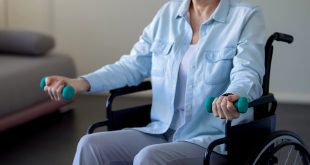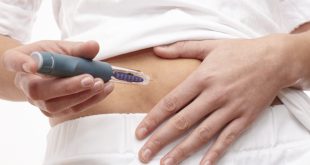During the weekly peer support group for those living with type 2 diabetes and heart disease, many people shared their weight loss experiences. They explained how a variety of “diets” were followed in the past to lose weight, only to regain it all back, plus more. Some reported feeling guilty and frustrated when daily weigh-ins showed little or no movement.
Vicky shares her struggles with weight and how participating in a cardiac rehab program helped her to abandon her weight scale obsession.
**********
“I am 54 years old and have struggled with my weight since the age of 12. I lived my life always trying the latest ‘fad diet’. I followed a very low carb diet prescribed by a medical doctor. He would give me vitamin injections and lots of supplements. I lost 60 lbs in 8 weeks, but I was miserable. I felt weak all the time; I had no energy and I felt like I was in a constant haze. I have since learned that the reason I felt so horrible was because the brain and muscles require glucose (which we get from carbs) to function properly. Gradually, over the weeks and months, I started to regain the weight. Since then, I was always up-and-down on the scales; each time gaining more and more. I felt like a complete failure.”
Vicky continues her story:
“The total amount of weight I have lost since the time I started trying to lose is more than my current body weight today. Everyone accused me of not having enough will- power. They felt that if I really wanted to lose weight I should discipline myself more. What they don’t realize is that I was trying.
It was a constant struggle. I had poor body image and my self-esteem was low. I was never successful at keeping the weight off, so I eventually gave up on dieting and exercise.
At age 45, I was prescribed a slew of medications. I took pills for my low thyroid, high blood pressure, high cholesterol, and reflux. I started taking anti-depressants. Two months ago, my shortness of breath worsened. Surprisingly, the doctor told me I had a silent heart attack and it was then that I was diagnosed with type 2 diabetes. I had three stents in the main artery of my heart and was referred to cardiac rehab.”
Vicky’s cardiac rehab experience
“Before starting the program, my fitness level was measured using maximal oxygen uptake or VO2 max. This information allowed my cardiac rehab supervisor to create an exercise prescription for me. My body measurements were also analyzed with an In Body 520 machine that looks at how much lean muscle you have compared to fat. Simply looking at your weight on a scale isn’t a good measure of health.
Prior to joining cardiac rehab, I never exercised! Now, I was following my exercise prescription of walking 40 minutes a day, five days a week and weight training twice a week. I didn’t start here all at once. My prescription gradually progressed over the course of the program. I also worked with the dietitian, who gave me insight on healthy food choices I could make to manage my diabetes. The focus at the centre was one of promoting sustainable health behaviours and respecting the diversity of body shapes and sizes. I felt welcomed, supported and encouraged. Feelings of guilt and self-loathing became a thing of the past. For the first time, I enjoyed eating healthy and moving my body. Things were going well for me.
Despite not experiencing significant changes to my weight or shape, my fitness level had improved by 40% and my lean muscle mass had increased by 20%. I now understand that gaining lean muscle is more important than losing fat. I learned that you can be at a higher weight AND be fit. Because of my commitment to regular exercise, I no longer have to take Diamicron, which caused me to be hypoglycemic.”
Lessons from Vicky’s story
That fat can turn into muscle is a misconception. Muscle and fat are two different systems with different biologies and cell machinery. In Vicky’s case, her yo-yo dieting contributed to more dangerous or visceral fat that affects the organs (e.g. pancreas) in the body. When calorie intake is restricted, your body must find energy elsewhere. Some of it comes from stored body fat, but also from lean muscle tissue. The goal is to preserve lean tissue as this is what keeps us healthy and strong.
The key to healthy living is being fit and improving the fat-to-muscle ratio. Vicky’s story demonstrates how she accomplished this task by focusing on health, not weight loss. She is following a new path of living she can stick with for the long term.
 Diabetes Care Community Learn, connect and care
Diabetes Care Community Learn, connect and care



